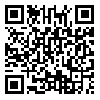Volume 9, Issue 2 (Summer 2022)
johe 2022, 9(2): 70-87 |
Back to browse issues page
Download citation:
BibTeX | RIS | EndNote | Medlars | ProCite | Reference Manager | RefWorks
Send citation to:



BibTeX | RIS | EndNote | Medlars | ProCite | Reference Manager | RefWorks
Send citation to:
Moghadasi A, Jafari S, Yousefinejad S. Sampling of Viruses and New Emerging Infections: A Systematic Review. johe 2022; 9 (2) :70-87
URL: http://johe.umsha.ac.ir/article-1-755-en.html
URL: http://johe.umsha.ac.ir/article-1-755-en.html
1- Department of Occupational Health, School of Health, Shiraz University of Medical Sciences, Shiraz, Iran
2- Department of Occupational Health, School of Health, Shiraz University of Medical Sciences, Shiraz, Iran ,yousefisa@sums.ac.ir
2- Department of Occupational Health, School of Health, Shiraz University of Medical Sciences, Shiraz, Iran ,
Abstract: (5084 Views)
The rapid emergence of the SARS-COV-2 virus and its variants has shown the importance of the transmission of infectious diseases through bioaerosols. Bioaerosols are airborne particles that contain microorganisms or biological materials derived from living organisms. The ability of viruses to become airborne plays an important role in their spread. A total of 542 articles were collected for this study through searches in the electronic databases of PubMed, Scopus, and Web of Science using the selected keywords in the titles and abstracts of articles. Subsequently, all articles were screened based on their titles, abstracts, and the study objective, and 105 articles were selected for this systematic review. This study aimed to investigate the advantages and limitations of previously reported methods used for sampling airborne viruses, especially the new coronavirus. The authors investigated more than 100 articles focused on sampling and evaluation of airborne viruses, characteristics, and factors that affect the accuracy and precision of sampling methods. To date, many methods have been proposed for sampling airborne viruses, including liquid impingers, impactors, filters, and electrostatic precipitators. The efficiency and effectiveness of these virus sampling methods can be affected by such factors as the aerodynamic diameter of viruses, challenges related to the quantification of sampled viruses, the impossibility of differentiating between active and inactive viruses in the collected samples, the possibility of damage/inactivation during sampling and analysis, and other environmental factors. Each of these methods has advantages and disadvantages that limit their application.
Type of Study: Review Article |
Subject:
Chemical agents
Extended Abstract [HTML 79 KB] (230 Download)
Send email to the article author
| Rights and permissions | |
 |
This work is licensed under a Creative Commons Attribution-NonCommercial 4.0 International License. |







